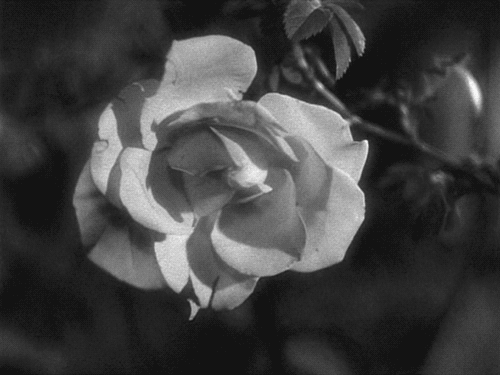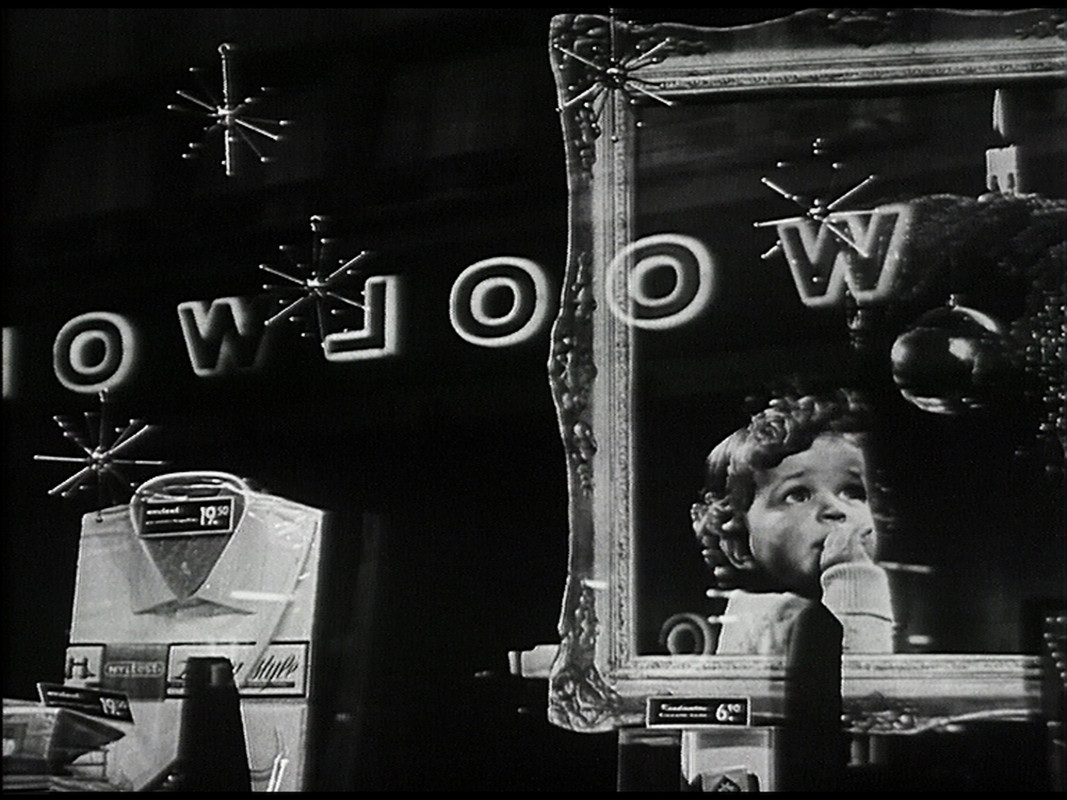Si muero antes de despertar [If I Should Die Before I Wake] (Carlos Hugo Christensen, 1952)
Nov
28
soup

Lucio (Néstor Zavarce) having dinner with his mother (Blanca del Prado) and strict father. DP: Pablo Tabernero.
– Can such miracles really happen?
– You and I are living proof.La Belle et la Bête [Beauty and the Beast] (Jean Cocteau + René Clément, 1946)
Nov
28
Giving Tuesday

The most beautiful flower, a rose, in La Bête's enchanted garden. DP: Henri Alekan.
Someone is given something special for Giving Tuesday (USA)
Just before leaving home for a business trip, a father asks his three daughters what he can bring them as a return gift. The eldest two ask for silly, extravagant things. A monkey! A parrot! The youngest simply wishes the most beautiful flower which the father finds in an enchanted garden, guarded by a terrible beast. And will pay for with his life unless he gives his youngest away to the beast, to die in his place.
#Cocteau and Clément's La Belle et la Bête is of course based on Gabrielle-Suzanne Barbot de Villeneuve's fairy-tale, which on its turn was based on the classic myth of Cupid and Psyche.
1999 A.D. (Lee Madden, 1967)
Nov
27
Cyber Monday

Mother Karen (Marj Dusay) taking a break from online food planning by shopping for a new wardrobe for everyone but herself. DP: Vilmos Zsigmond.
Shopping online on Cyber Monday
In the soul crushing future of 1999, one heroic nuclear family bravely fulfils their gender-specific duties. While Father Mike works in his computer-aided office, Son Jamie fails at computer homeschool and Mother Karen slavishly shops, cooks, and cleans as if the 70s never happened.
Thankfully, the future turned out to be even bleaker.
“This we do for pleasure, so that we may shortly be at the mercy of venomous snakes and poisonous ants. How foolish can human creatures be.”Picnic at Hanging Rock (Peter Weir, 1975)
Nov
26
Valentine's cake – alfresco

A piece of cake. With teeny tiny ants crawling all over it. Awww! DP: Russell Boyd.
– Miss McCraw
“The vicinity is reknowned for its venomous snakes and poisonous ants of various species. It is, however, a geological marvel.”Picnic at Hanging Rock (Peter Weir, 1975)
Nov
26
World Lewis Day

A koala high up in a tree, observing one of the rescue operations. DP: Russell Boyd.
A koala for World Lewis Day
It's not possible to be in nature, one can only be absorbed by it.
– Mrs. Appleyard
“I don't know what to do with her Highness. Say right and she'll go left, say left and she'll go right. And though she is a girl, she has never shown me a tear.”隠し砦の三悪人 [Kakushi-toride no san-akunin / The Hidden Fortress] (Akira Kurosawa, 1958)
Nov
25
White Ribbon Day

General Makabe (Toshirō Mifune) facing us with Princess Yuki (Misa Uehara) seemingly standing high above him on the fortress' wall, facing away. DP: Kazuo Yamazaki.
Someone protects a woman on White Ribbon Day
Leave it to popular media to create a fashion for helplessness. In the 110 years that have passed since William Randolph Hearst's titular heroine fought her way to #emancipation in The Perils of Pauline (1914), “the damsel in distress” is still very much the go-to trope for movie writers. Sadly, instead of debunking the belief that women need to be protected by men from men, it's now embraced by third wave feminism. Just yesterday – November 25, 2023 – I saw a call to arms from a leftwing feminist group to “protect girls” from the primal evil that is manhood. Oh how we did better once.
– old lady-in-waiting
In Kurosawa's 隠し砦の三悪人, a couple of greedy peasants escort a man and woman across enemy lines after the man has promised them a share of the gold they're carrying. Unknowingly, the fools not only protect their bounty, but a general and princess trying to escape an enemy clan so they can rebuild their kingdom. And also unbeknownst to the tricksters, Makabe and Yuki are not as helpless as they may seem.
Weihnacht (Roland Klick, 1963)
Nov
24
Black Friday

The miracle of Christmas, as seen in a fancy shop window. A dress shirt is on display among Sputnik-style decorations and an entranced toddler is reflected in a gilded mirror. From across the street, “Woolworth's” in neon text bounces off the window pane. DPs: Jochen Cerhak & Roland Klick.
Holiday shopping on Black Friday (once just the USA, now this pest is everywhere)
A little boy takes in the magic of pre-Christmas, while the adults rush and worry about all that must to be bought.
Italianamerican (1974)
Cast and crew in the Scorsese family dining room.

November 23: family dinner for #Thanksgiving
Italianamerican (Martin Scorsese, 1974)
Take a few spoonfuls of tomato and throw them in there.
While mother Scorsese's famous meatballs in gravy are working their way to mwah! chef's kiss perfection, son Martin interviews his parents Catherine and Charles. For those unsure what to cook, and for those who don't celebrate Thanksgiving at all, mama's recipe is included in the end credits. And here:
O slavnosti a hostech [A Report on the Party and Guests] (Jan Němec, 1966)
Nov
22
grapes

A man in tuxedo removes a grape seed from his mouth. He's seated at a wonderfully opulently set table in a birch forest. DP: Jaromír Šofr.
“So will someone tell me what happened or not? A brother shouldn't turn against his brother. And a guest shouldn't turn against a guest.”O slavnosti a hostech [A Report on the Party and Guests] (Jan Němec, 1966)
Nov
22
Bales' Birthday

The birthday party mingled in with the others in the woods, all dressed immaculately and seated at elaborately decked tables. The guests and their host raise their glasses towards the camera. DP: Jaromír Šofr.
A birthday party for OP Bales’ birthday!
– the host